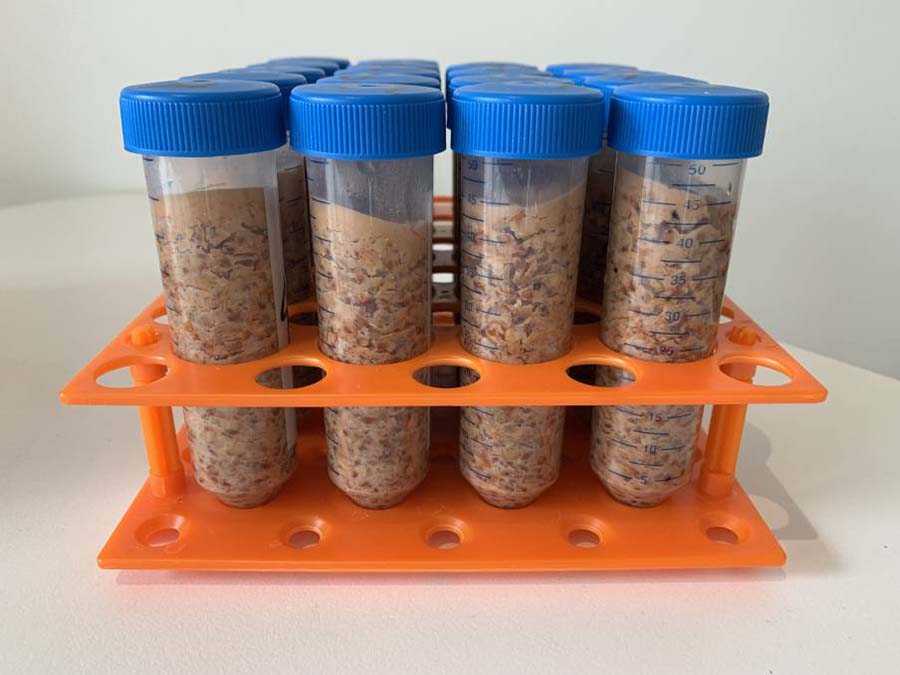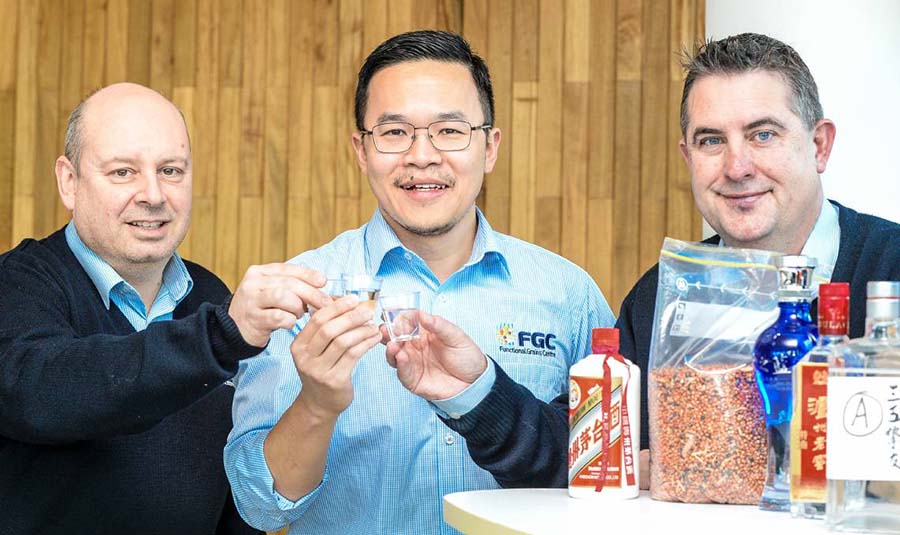Research into the fermentation qualities of Australian-grown sorghum is showing positive results, potentially opening new 'boutique' markets for this summer grain.
Dr Siong Tan, from the Australian Research Council's Industrial Transformation Training Centre for Functional Grains, is working on a GRDC-invested project assessing whether Australian sorghum can be used in the Chinese spirit baijiu.
Early work on 13 varieties' fermentation qualities identified two Australian varieties with good performance. Now work will begin on testing additional varieties in a pilot-scale operation.
Dr Tan, who spoke recently at the Australian Summer Grains Conference, says sorghum is the main ingredient in baijiu.

Sorghum following fermentation to make baijiu. Photo: Nicole Baxter
Although most of that sorghum is produced in China, baijiu producers like the idea of sourcing Australian product.
"This is because of its quality," he says.
"This includes overall appearance, such as colour, size and low or no tannin. Also, because of our location, Australia plays an important part supplying sorghum when the northern hemisphere is off-season."
However, Dr Tan suggests Australia's role may be in more boutique baijiu products.
"Australian sorghum is an important summer crop in Queensland and northern NSW, but most of the grain is used as stockfeed. Selling sorghum to a boutique baijiu producer could be another option. I think that's the way to go considering it is not easy to increase the yield here due to obvious reasons like drought. So rather than compete in terms of quantity, quality is probably the best bet for Australia."
Baijiu typically contains 40 to 60 per cent alcohol and is often consumed neat. Its consumption increases at celebratory times, such as on Chinese New Year and China's National Day.
The market is worth about US$100 billion industry annually, almost twice that of whisky. Indeed, the top four most valuable spirit brands are baijiu products.
As part of the five-year project, 'Expanding options for sorghum - food and distilling', Dr Tan began testing the fermentation qualities of 13 Australian sorghum varieties.
Distillers' requirements
To meet baijiu makers' requirements, sorghum must have a certain grain colour, a high starch content, be a waxy type, have less than 10 per cent protein, ferment in short times and have less than one per cent tannin. Makers must also be confident in supply.
Dr Tan's first phase of research, completed in 2018, explored which varieties best suited fermentation and categorised them based on fermentation time, glucose changes and pH, which can be used to predict fermentation stages.
Under perfect conditions, a desirable fermentation conversion rate - from glucose to alcohol (and carbon dioxide) - is 95 per cent, Dr Tan says. The Australian varieties tested had a 90 per cent conversion rate. "This was considered a good performance," he says.
Dr Tan recently completed phase two of the research - fermentation of sorghum in the laboratory using a simulated baijiu-making process. The forthcoming pilot scale fermentation will upscale these fermentation trials. Six varieties, from slow-fermenting to fast-fermenting varieties, will be taken through the first stage of a traditional baijiu-making process.

Charles Sturt University professors Anthony Saliba, left, and Chris Blanchard, right, with postdoctoral research fellow Dr Siong Tan. Photo: Nicole Baxter
The amount of sorghum tested will increase from the one kilogram used in the fermenting trials to 10kg for each variety. However, Dr Tan says 'real' baijiu will not be created, for several reasons.
"Biosecurity rules means we can't bring the traditional starter culture in from China. Also, real baijiu is made in a multi-step process to extract more glucose from the sorghum. Real baijiu is fermented for weeks, followed by distillation, then more starter culture and sorghum are added, and it is fermented again.
"We will only complete the first step. The consumption of 25 to 30 per cent of the glucose for the production of alcohol from the first round is expected."
Dr Tan says the study will provide the information needed to assess Australian varieties. From there, he will begin to study the flavour profile of these samples and next season's varieties using gas chromatography.

























































